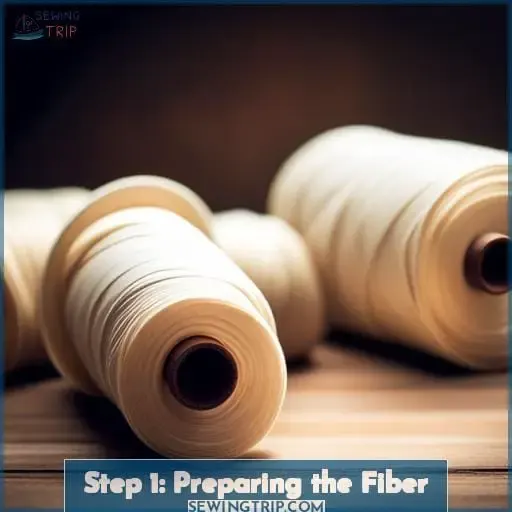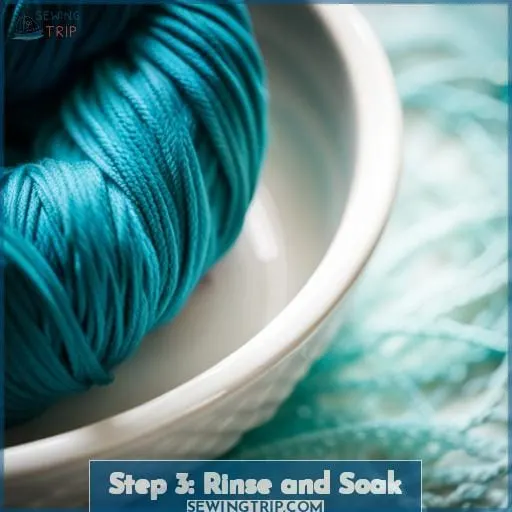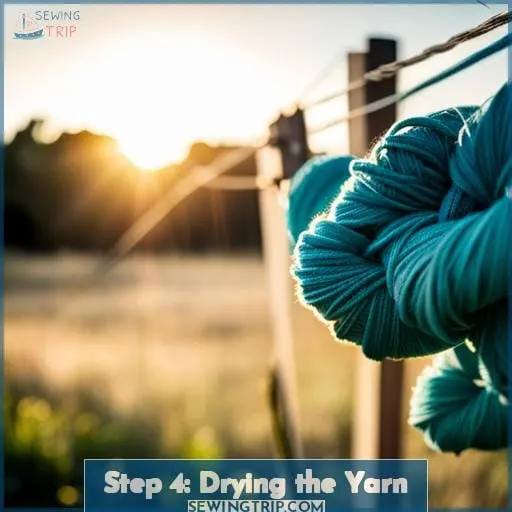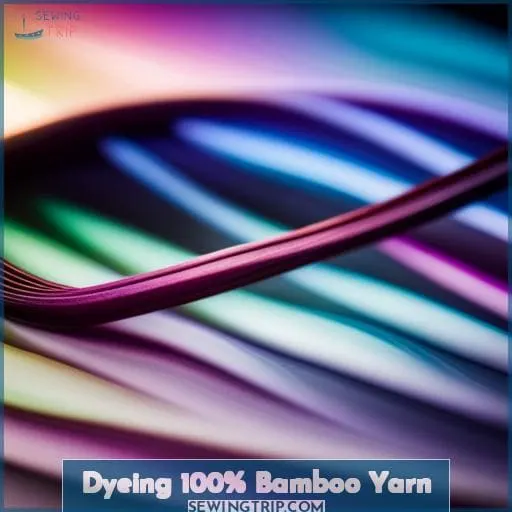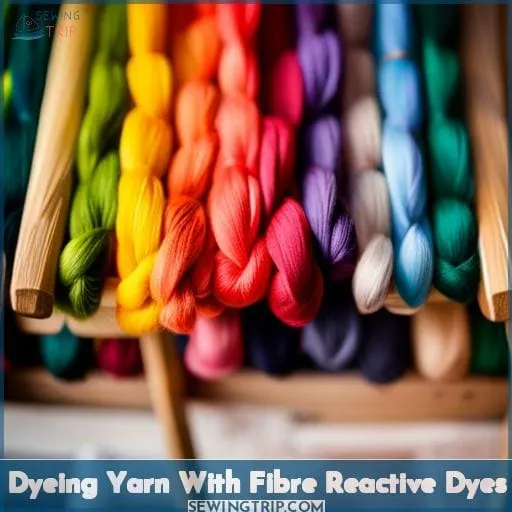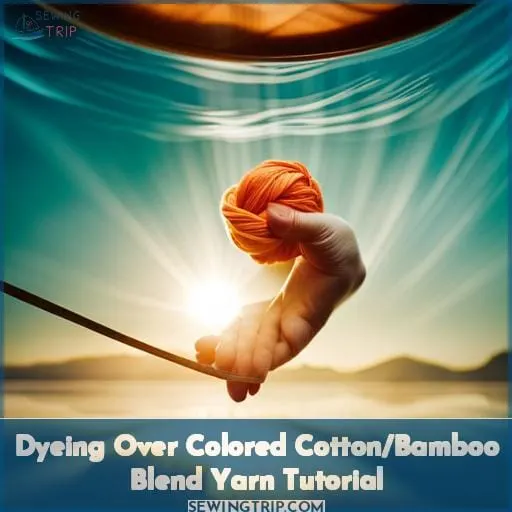This site is supported by our readers. We may earn a commission, at no cost to you, if you purchase through links.
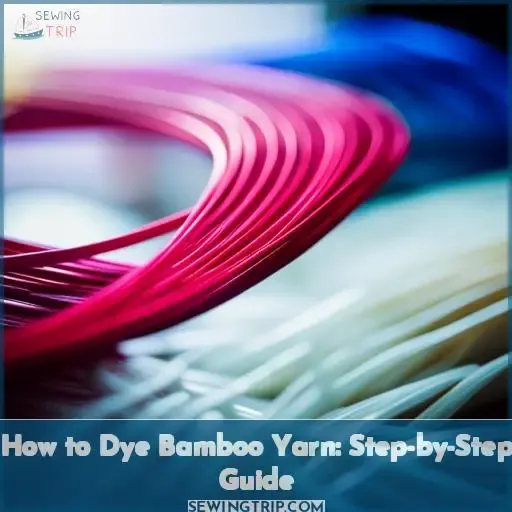 Are you ready to add a splash of color to your next project? If so, then it’s time for you to learn how to dye bamboo yarn! Dyeing 100% bamboo yarn is not as difficult as many people think. With the right supplies and steps, anyone can create stunningly colorful designs with this versatile material.
Are you ready to add a splash of color to your next project? If so, then it’s time for you to learn how to dye bamboo yarn! Dyeing 100% bamboo yarn is not as difficult as many people think. With the right supplies and steps, anyone can create stunningly colorful designs with this versatile material.
In this article we’ll walk through all the necessary steps for achieving beautiful results when dyeing cellulose fibers like cotton, rayon or bamboo – including prepping the fiber, selecting and mixing dyes correctly and caring for dyed materials after completion.
So grab some supplies from your local craft store – it’s time get creative with color! First, you’ll want to prepare your yarn by washing it. This removes any dirt, oils or sizing that could prevent the dye from absorbing evenly.
Next, it’s time to choose your dyes. Fiber reactive dyes are best for plant-based yarns like bamboo. They bond permanently to the fibers for long-lasting color that won’t fade or bleed. You’ll also need fixing agents like sodium carbonate and sodium sulfate. These help the dye fully penetrate the yarn.
When mixing your dyes, carefully follow the manufacturer’s instructions. Measure out the dye powder, mixing agents and water in the recommended proportions. Making sure your dye bath is the right concentration is key for getting perfectly saturated color.
Once your dye bath is prepared, add your damp yarn. Let it soak for at least an hour, gently agitating occasionally.
After dyeing, rinse the yarn thoroughly in cool water until it runs clear. Hang dry, then steam or iron the skeins to heat set the dye.
With the right dyes and technique, you can easily infuse bamboo yarn with gorgeous hues perfect for any project.
Table Of Contents
Supplies
To dye bamboo yarn, you’ll need a few essential supplies. First, make sure to prep your work surface by covering it with plastic or old towels to protect against any potential stains.
As for utensils, options include stainless steel pots or pans that are designated solely for dyeing purposes. Be sure to also have a separate dye container where you can mix and store your dyes safely.
Since handling dyes can be messy, gloves are definitely needed to keep your hands clean and protected. It’s also wise to wear old clothes that you don’t mind potentially staining during the process.
When it comes to the actual dyes themselves, there are two main types commonly used: fiber reactive dyes and acid dyes. Fiber reactive dyes work well on plant fibers like bamboo yarn as they bond directly with the cellulose molecules in the fiber itself.
Lastly, consider how deep of a shade you want when choosing your dye stock concentration – this will determine how much color intensity is achieved in your final results.
Now that we’ve covered all necessary supplies, let’s move on!
Step 1: Preparing the Fiber
Preparation of the fiber involves thorough washing and scouring to remove any impurities. Before you begin dyeing your bamboo yarn, it’s important to pre-wash the skeins. This step helps eliminate any sizing or residue that may interfere with the dye absorption process later on.
To do this, simply fill a sink or basin with lukewarm water and add a gentle detergent specifically designed for plant fibers. Gently agitate the yarn in the soapy water for a few minutes, allowing it to soak up all of that cleansing goodness.
Once you’re satisfied with its cleanliness, drain away the soapy water and rinse your bamboo yarn under running water until no more suds remain. It’s crucial not to twist or wring out excess moisture from your precious strands as this can lead them astray from their natural alignment.
After rinsing thoroughly, gently squeeze out excess water by pressing down lightly along each skein’s length using both hands – just enough pressure should be applied without causing damage!
Finally, dry each separate skein completely before moving onto Step 2: Dyeing Process.
Step 2: Dyeing Process
Now that you’ve prepared your bamboo yarn for dyeing, let’s dive into the exciting process of adding vibrant colors to your creations. The possibilities are endless when it comes to patterns for tie-dyeing – think swirls, stripes, or even intricate designs inspired by nature.
Remember that water temperature plays a crucial role in achieving desired results. Experiment with warm and cold water to see how different temperatures affect the intensity and saturation of colors on your bamboo fiber.
Throughout this creative journey, patience is key. Allow ample time for the dye to penetrate the fibers fully and develop its true hues. When choosing between synthetic or natural dyes, consider their environmental impact as well as colorfastness over time.
Don’t be afraid to unleash your creativity by mixing various shades together! By blending different dyes together using fabric softener as a medium, you can achieve unique color combinations that will make your bamboo yarn truly one-of-a-kind.
With these steps in mind, you’re now ready to embark on an exhilarating adventure into dyeing bamboo fiber – a journey where liberation meets mastery!
Step 3: Rinse and Soak
After completing the dyeing process, it’s time to move on to the next step: rinsing and soaking your bamboo yarn.
Start by rinsing your dyed yarn under cold running water until the water runs clear.
Next, prepare a vinegar solution by adding one cup of white vinegar to four cups of cold water in a basin or sink large enough for your yarn. Soak your bamboo yarn in this solution overnight to help fix and brighten the colors while also checking for colorfastness.
If you want deeper shades, try using saltwater instead of vinegar during this soak stage; it can intensify certain dyes’ hues without altering them completely.
Step 4: Drying the Yarn
Once you’ve completed the rinsing and soaking process, it’s time to dry the yarn. Proper drying is crucial for maintaining the color fastness and overall quality of your bamboo yarn. You want to ensure that your beautiful creation stays vibrant and soft for years to come.
To air dry your dyed bamboo yarn, gently squeeze out any excess water without wringing or twisting too forcefully. Lay a clean towel on a flat surface and place the damp yarn on top of it in an even layer.
Smooth out any twists or tangles with your hands, being careful not to stretch or distort the fibers.
Allow your precious creation to bask in gentle sunlight until completely dry. Avoid direct heat sources like radiators as they can cause damage to delicate bamboo textiles.
By following these simple steps for drying after dyeing, you’re taking proper care of both your dyed bamboo yarn and yourself as an emerging master of dyeing techniques!
Dyeing 100% Bamboo Yarn
To dye 100% bamboo yarn, how can you achieve vibrant and long-lasting colors? Here are some tips to help you achieve solid colors without streaks on your beautiful bamboo yarn:
-
Prevent Streaks: Make sure to thoroughly wet the bamboo yarn before applying the dye to prevent uneven color distribution.
-
Tips for Saturation: To ensure maximum color saturation, soak the bamboo yarn in a warm water and detergent solution before dyeing. This helps open up its fibers for better absorption of the dye.
-
Ideal Water Temperature: Use hot water (around 180°F) when preparing your dyebath. This temperature allows for better penetration of the dyes into the fiber.
-
Using Vinegar Fixative: Add vinegar to your dyebath or use it as a post-dye rinse to enhance color fastness and lock in vibrant hues on your bamboo yarn.
-
Achieving Solid Colors: Stir constantly while adding powdered or liquid dyes into your dyebath. This ensures that all parts of the fabric come into contact with equal amounts of pigment.
By following these steps, you’ll be able to create stunningly colored 100% Bamboo Yarn that will add an extra touch of beauty and uniqueness to all your knitting projects!
Dyeing Yarn With Fibre Reactive Dyes
Now that you’ve learned how to dye 100% bamboo yarn, let’s dive into the exciting world of dyeing yarn with Fibre Reactive dyes. These dyes are perfect for adding vibrant and long-lasting colors to your bamboo creations.
With their excellent color mixing capabilities, you can create an endless array of shades and hues that will truly make your projects stand out.
There are various techniques you can try when it comes to application methods: immersion dyeing, hand painting, or dip-dyeing. Each method offers its unique results and allows for different levels of control over the final outcome.
To ensure the colors stay vivid even after multiple washes, fixing solutions play a crucial role in this process. By using fixing agents like soda ash or urea during the dyeing process, you’ll achieve optimal colorfastness.
Dye concentrations also need careful consideration when working with Fibre Reactive dyes on bamboo yarns. Adjustments may be necessary depending on the desired intensity and fiber absorption rates.
Lastly, equipment tips should not be overlooked! Using stainless steel pots dedicated solely for dyeing purposes helps prevent cross-contamination between colors.
| Color Mixing | Application Methods | Fixing Solutions | |
|---|---|---|---|
| R1C1 | Magenta + Yellow = Orange | Immersions Dying | Soda Ash |
| R2C1 | Magenta + Cyan = Purple | – | – |
| R3C1 | Magenta + Black=Dark Magenta | – | – |
In conclusion
Dyeing Over Colored Cotton/Bamboo Blend Yarn Tutorial
Dyeing over colored cotton/bamboo blend yarn allows you to deepen the original color or achieve a new hue. This technique lets you experiment with different shades and create unique pieces that stand out.
- Consider the existing color and choose a complementary or contrasting shade for blending purposes when dyeing over colored cotton/bamboo blend yarn.
- Keep in mind that dye and fiber interactions may vary due to differences in composition.
- Use special techniques like immersion dyeing or hand-painting methods tailored for blended fibers to ensure even color distribution.
Dyeing over colored cotton/bamboo blend yarn can be a difficult undertaking that leads to beautiful results if done right! Don’t be afraid to mix colors and explore various techniques until you achieve your desired masterpiece.
Conclusion
Just as a butterfly emerges from its chrysalis in a blaze of color, you can transform plain bamboo yarn into vibrant works of art through dyeing. Follow the simple preparation, dyeing, rinsing, and drying steps to infuse bamboo yarn with the hues of your imagination.
With the right dyes and a bit of patience, you’ll soon be crafting custom-dyed bamboo yarn masterpieces that dazzle with their jewel tones and take your knitting and weaving to new creative heights. The possibilities are as boundless as your passion when you learn how to dye bamboo yarn.


